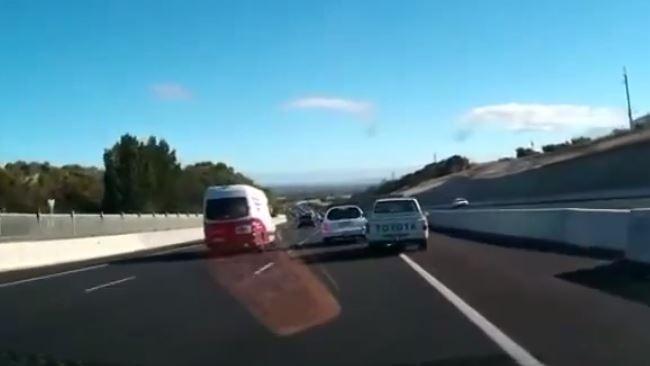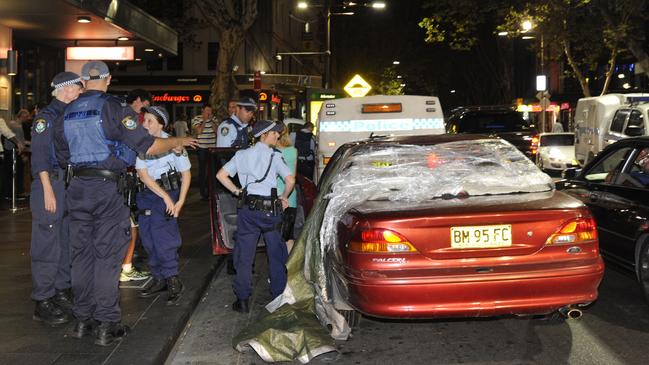By the numbers: South Australia’s worst drivers revealed
We’ve crunched the numbers to find answers to common questions on the road; are Volvo drivers the worst, do red cars make cops angry, are motorbike riders worse than car drivers?

Police & Courts
Don't miss out on the headlines from Police & Courts. Followed categories will be added to My News.
Volvo drivers are unfairly maligned for being too slow, high performance Porsche drivers are not the hoons some think they are, and even rule-bending Alfa Romeo fans don’t always deserve the bad rap they get.
These are some of the surprising findings of a Sunday Mail analysis of drivers caught by police breaking traffic laws in 2019/20.
The analysis looked at the number of times the drivers of the various makes and models of cars were reported by police, based on the number of cars on the road.
It shows Renault, Mercedes and Range Rover drivers were the most often caught breaking road rules.
On average, one in every 2.4 Renault and Mercedes drivers was caught doing the wrong thing during the last financial year.
The best-behaved drivers were behind the wheel of a Jaguar - only one in ever 9.2 drivers
was reported on average during the analysis period.
Perhaps most surprising for many motorcycle-hating drivers was that riders are far more careful on the road than car drivers.
RAA spokesman Charles Mountain said the figures showed that drivers of any marque could be caught at any time.
“Whatever you drive you need to be mindful of the rules and what you are doing on the road,’’ he said.
Riders of the major motorcycle makes are uniformly well behaved, some being caught at only a fraction of the rate of the worst car drivers.
Harley Davidson riders, who frequently complain of being targeted by police, were the best behaved on the road, attracting an one fine for every 14.5 motorbikes on the road.

But because of the risks they take, and their over-representation in crash figures, police have tended to take a dim view of motorbike riders doing the wrong thing.
One in every 8.9 offenders on average was issued with a caution, compared to one in every 6.2 sedan drivers, and one in 7.8 light truck drivers.
For all vehicles, one in every 7.8 infringements resulted in a caution only.
Police refused to comment.
South Australian Road Transport Association executive officer Steve Shearer said fines issued to truck drivers could not be compared to other types of vehicles.
“There are far more rules which truck drivers have to comply with and while the average car spends 25,000 km on the road each year, a truck does 250,000 (km).
“So, on average, they will be exposed to many more faults, as well as the compliance manual for a truck being as thick as the bible.’’
Mr Mountain said there were some reasons why more expensive and more modern vehicles were caught more often.
“Perhaps the sensation of speed is masked because they are so quiet,’’ he said.
“If the car you drive is exceptionally quiet you need to be mindful of it.’’
Commenting on the infrequent cautions and fines issued to high-performance cars such as Ferrari and McLaren, Mr Mountain said; “They are such specialist vehicles that they are not driven daily and not even often for many of them, and I suspect that is why Harley Davidson motorbikes are not frequently caught also’’.
“Harley motorbikes are more for club runs or weekends."
And drivers of some makes may have better negotiation skills to get themselves off the hook.
One in every 6.9 Holden drivers was given a caution instead of a fine, compared to one in 13 Mercedes drivers.
There is no evidence that red cars and motorbikes raise the ire of police, or as the urban myth states, go faster.
One in every 5.6 red vehicles was caught breaking the rules on average in 2019/20, compared to one in every 3.7 white vehicles.
And when it comes to speed, one in 9.7 red cars was caught compared to one in every 12 white cars.
There is some evidence that older vehicle drivers break the law more, have cars in worse condition, and are less vigilant in keeping their registration up to date.
One in every 4.8 cars made in 2019 incurred a fine in 2019/20, but this rate increased to one in every 3.5 made in 2010, one in every 2.5 made in 2010, but then decreased to one in every 5.1 made in 1990.
